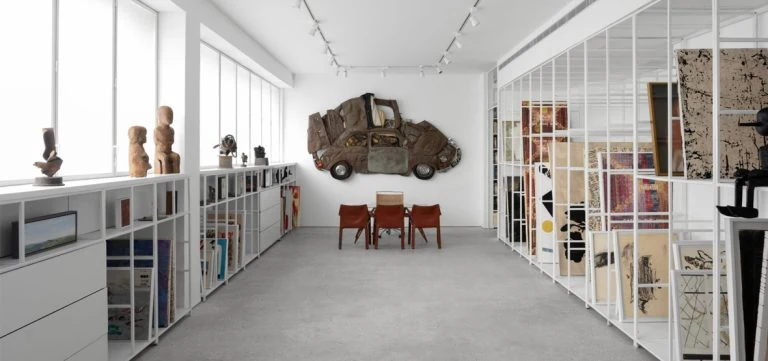Behind the walls of the Hansen hospital
When Ruth Wexler started working as a nurse at Jerusalem’s Hansen Hospital in 1983, it was still a place that many people feared. Just a short walk from the Inbal Hotel, this complex behind stone walls was where people were treated for leprosy. By the time Wexler started working here, leprosy was treated with antibiotics and was called by its modern name, Hansen’s Disease, after a Norwegian scientist named Gerhard Armauer Hansen discovered the bacteria that causes the disease, mainly affecting the skin, nose and eyes. “But everybody still called it the leper home,” Wexler recalls. “And some people were afraid to come inside.” The hospital, which opened in 1887, only closed its doors in 2009. But now it has taken on a second life. A few years ago, this sprawling complex re-opened as the Hansen House Center for Design Media and Technology. The stone buildings that were once a hospital have been turned into art galleries, working spaces, and a cafe. The gardens, which patients with leprosy once relied on for fruit and vegetables, are alive again and bursting with colorful flowers and shady green spaces. It has become one of the city’s trendiest public places, hosting many cultural events and festivals. This is largely due to Wexler’s passion for the place. When the hospital closed, Wexler organized a historical exhibit about it, which the city’s mayor, Nir Barkat, attended. This exhibit led to the municipality deciding to preserve the property–originally designed by German architect and archaeologist Conrad Schick who was Jerusalem’s first city planner– and open it as a public cultural space. “Else it probably would have been turned into luxury apartments or a boutique hotel,” says Shira Schonfeld, of Ran Wolf Urban Planning and Project Management, which manages the Hansen House. “It was really because of Ruth’s exhibit that this is what it is today.” While Wexler says “it’s a great thing,” that the two acres of land and its buildings have been turned into such a vibrant space, it is still important to her to educate people about its historical role in treating Hansen’s Disease, and in fighting the stigma that is still associated with leprosy. She now gives private tours of the property, including the few hospital rooms that have been preserved as a museum. One of the first things she emphasizes is that “this was never a closed institute. Patients could come and go, and people could come in and visit.” Contrary to the cultural fears people have about it, going back to Biblical times, leprosy is only “mildly contagious,” Wexler explains. Only about 5% of the human population can actually catch it, as most immune systems fight it off, she says. And since the 1940s it has been treatable with antibiotics. “There are good cures and most patients can lead a normal life,” she says. But even though going back to the 1940s, some of the Hansen Hospital patients were medically fit to go home, many stayed living here, as their families sometimes rejected them due to social stigma and fears of catching the disease, Wexler says. The black and white photos hanging in the museum reflect the community that developed in this pastoral place. Photos can be seen of the residential patients working in the gardens and learning how to sew. “Christians, Muslims and Jews, everybody lived together,” Wexler says. This is the part of the hospital’s history that she really does not want to be forgotten, and this is why she gives tours. For people from outside Jerusalem who come here for the cultural events, “many don’t even realize what this place used to be,” she says. “And I feel that it is a very special human and cultural story, how for everybody who came in, this was a home for them.


